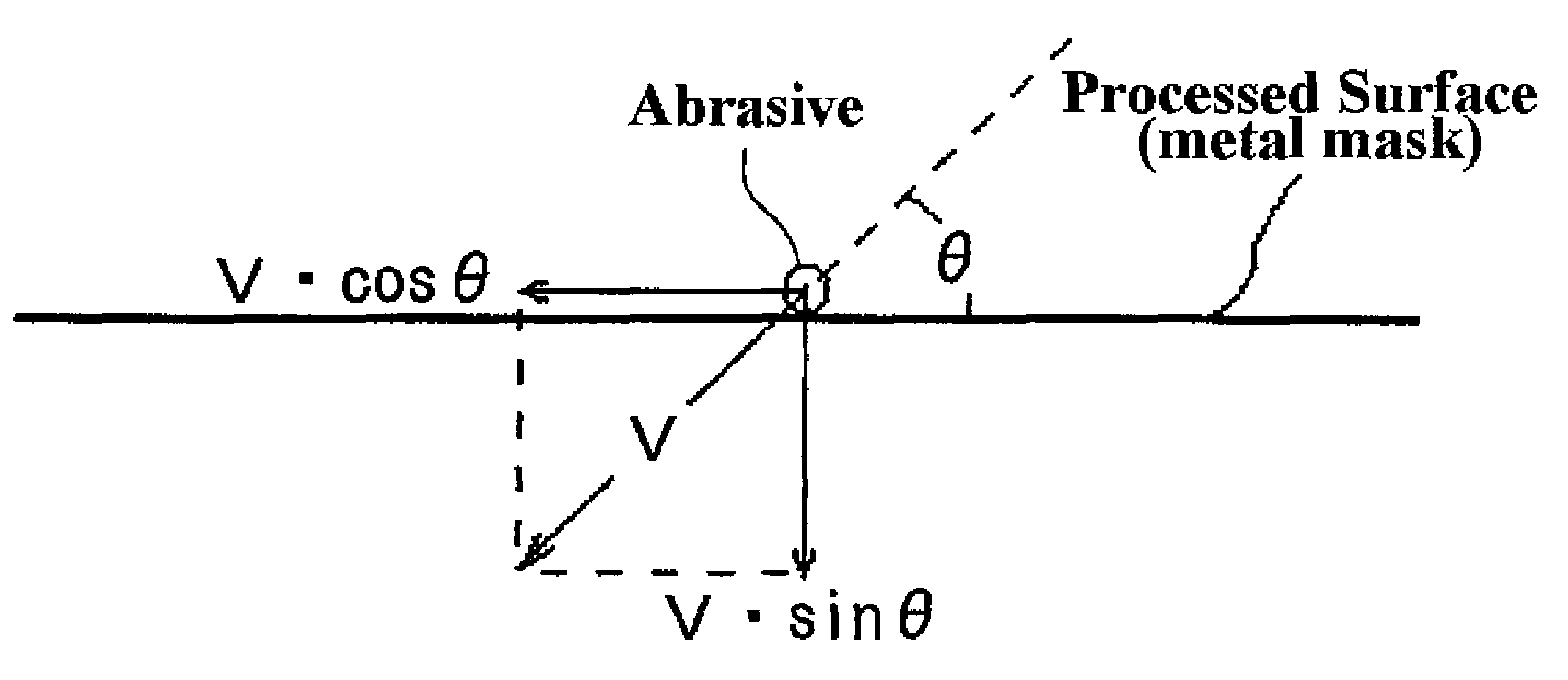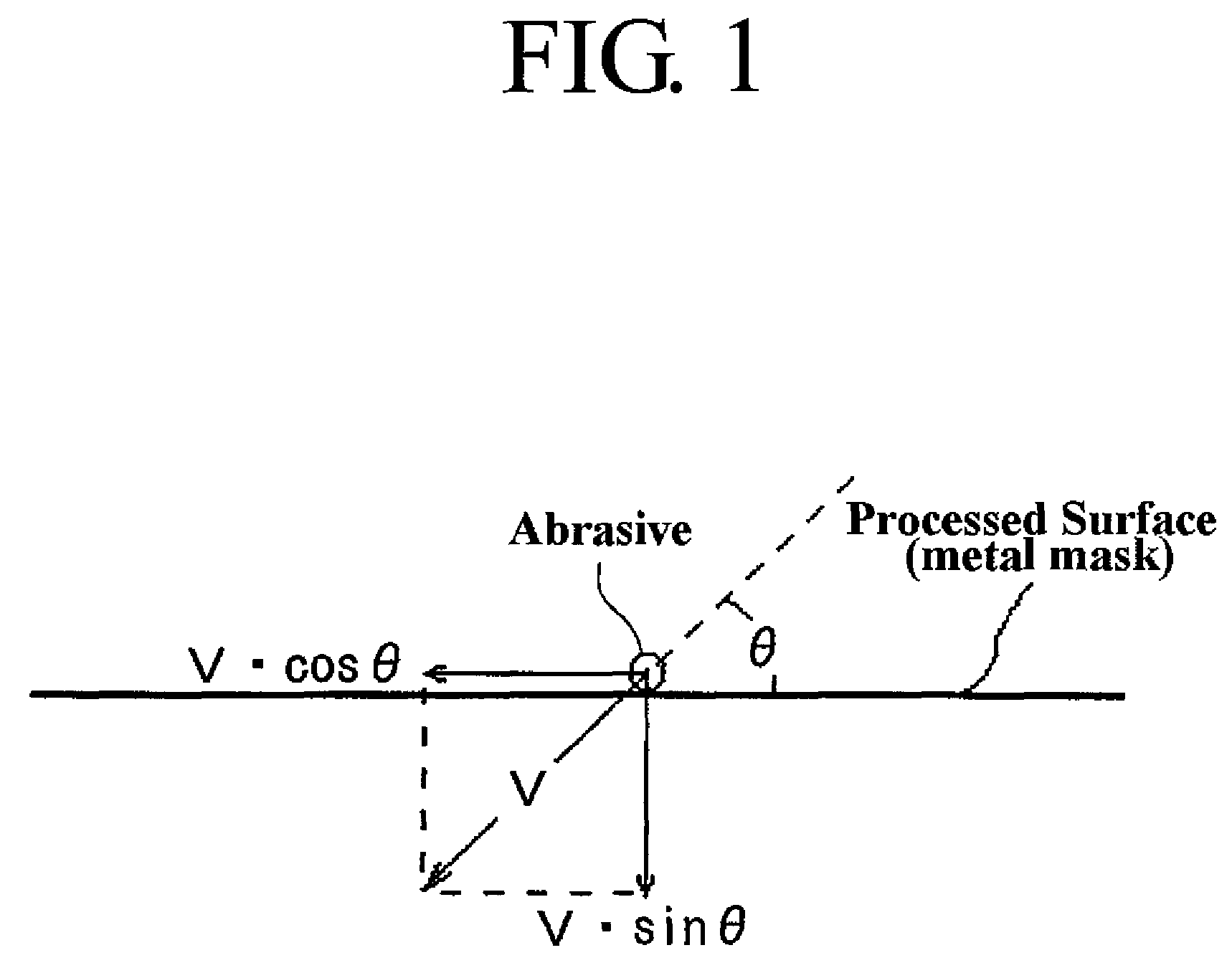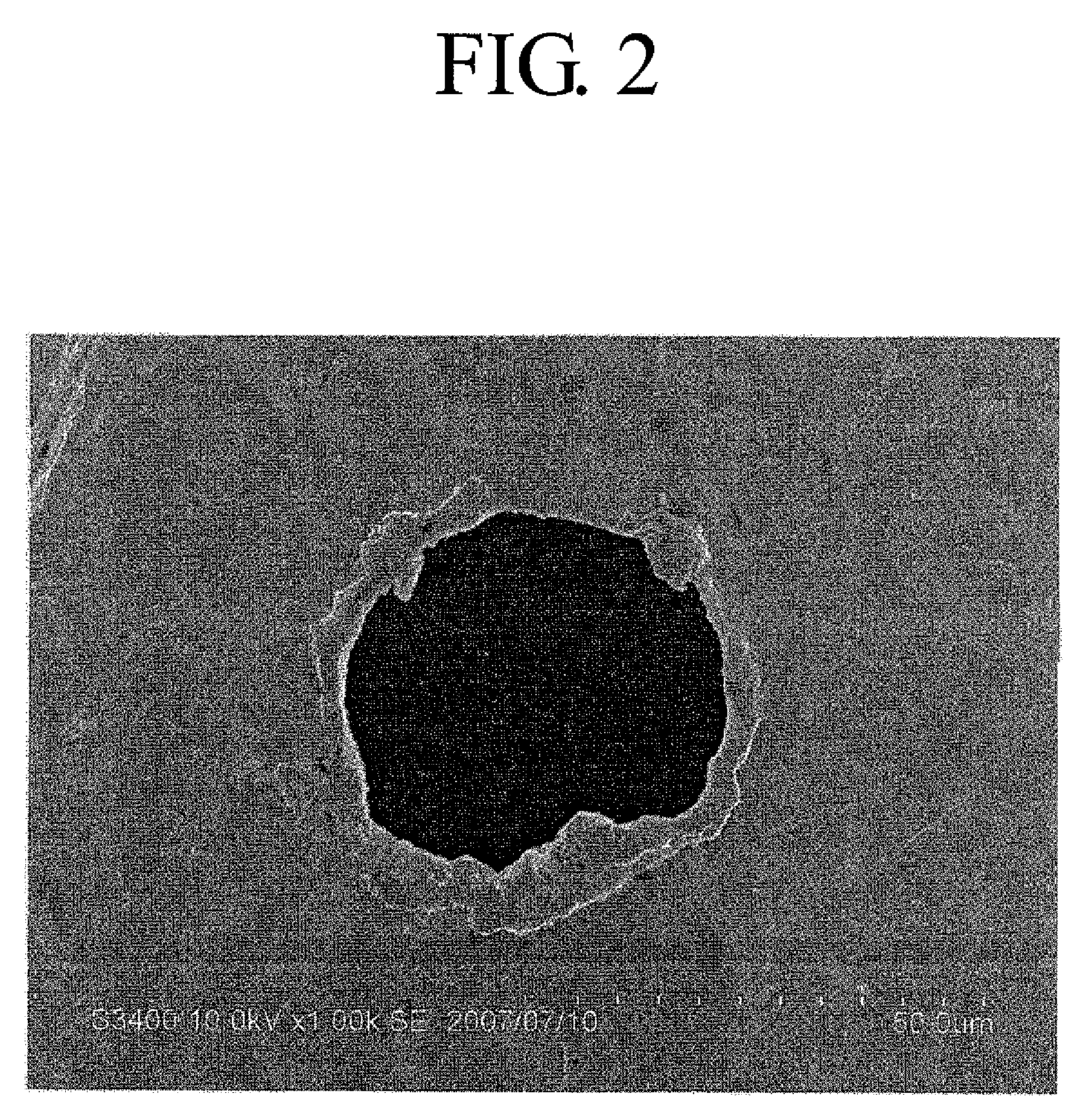Method for producing metal mask for screen printing
a metal mask and screen printing technology, applied in printing, printed circuit manufacturing, manufacturing tools, etc., can solve the problems of plastic deformation of the surface of the product to be treated, sandblasting cuts the metal plate, and increases so as to reduce the cost of production, and reduce the number of production steps
- Summary
- Abstract
- Description
- Claims
- Application Information
AI Technical Summary
Benefits of technology
Problems solved by technology
Method used
Image
Examples
example
[0209]In the printing employing the metal mask produced by the method of the present invention (Example), the rolling of the ink paste was achieved, and the painting ink was pushed out of the openings of the mask, so that the image printed on the substrate was identical to the shapes of the openings, etc.
[0210]It was confirmed that in order to roll the solder paste or ink paste, along with the paste properties, such as the surface tension, or viscosity, etc., a printing squeegee drift speed and metal mask surface roughness corresponding thereto also are required, that significant surface roughness, such as that formed by sandblasting, is not really necessary, and that favorable rolling could be accomplished even with the comparatively smooth surface roughness (Ra) of 0.058 μm, as provided in the metal mask of the Example.
[0211]Moreover, in the metal mask produced by the method of the present invention, because the above-described plate-shaped abrasive or elastic abrasive slides alon...
PUM
| Property | Measurement | Unit |
|---|---|---|
| thickness | aaaaa | aaaaa |
| ejection pressure | aaaaa | aaaaa |
| incident angle | aaaaa | aaaaa |
Abstract
Description
Claims
Application Information
 Login to View More
Login to View More - R&D
- Intellectual Property
- Life Sciences
- Materials
- Tech Scout
- Unparalleled Data Quality
- Higher Quality Content
- 60% Fewer Hallucinations
Browse by: Latest US Patents, China's latest patents, Technical Efficacy Thesaurus, Application Domain, Technology Topic, Popular Technical Reports.
© 2025 PatSnap. All rights reserved.Legal|Privacy policy|Modern Slavery Act Transparency Statement|Sitemap|About US| Contact US: help@patsnap.com



